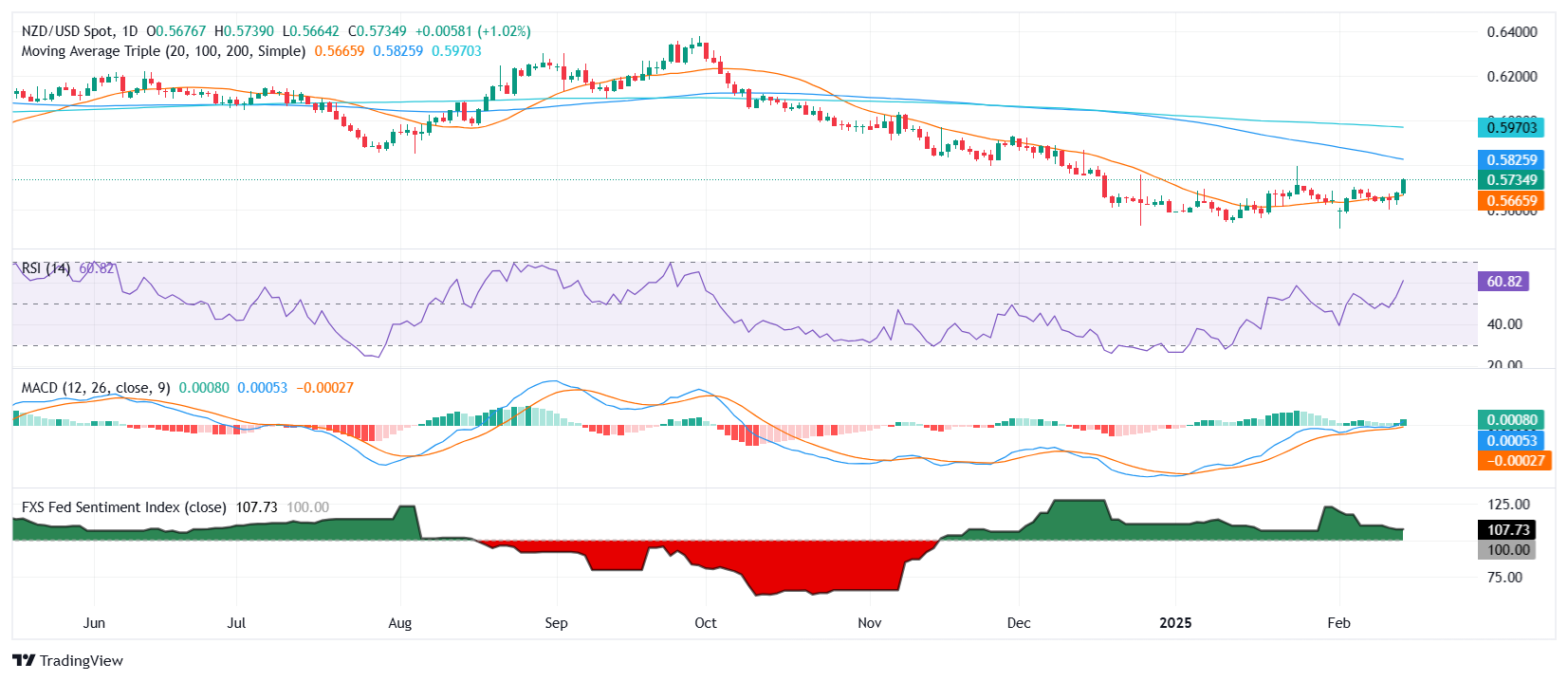The New Zealand dollar (NZD) continued its upward momentum against the US dollar (USD), pushing toward a key resistance level as bullish sentiment strengthened. The pair is eyeing a breakout above its 100-day simple moving average (SMA), a critical technical barrier that could determine its next direction.
The US dollar’s recent weakness has provided support for the kiwi, as markets reassess the Federal Reserve’s rate outlook. Softer US economic data has led to speculation that the Fed may not need to keep rates elevated for as long as previously expected, reducing demand for the greenback and boosting risk-sensitive currencies like the NZD.

NZD/USD 1-D Chart as of February 14th, 2024 (Source: TradingView)
In contrast, the Reserve Bank of New Zealand (RBNZ) has maintained a relatively firm stance on inflation, supporting expectations that rate cuts may be delayed compared to other central banks. This policy divergence has helped NZD/USD recover from recent lows, with traders betting on further upside if economic conditions remain favorable.
Additionally, improving risk sentiment in global markets has contributed to the kiwi’s strength. Optimism surrounding China’s economic outlook, a key factor for New Zealand’s export-driven economy, has lifted demand for the NZD, particularly as commodity prices stabilize.
Despite the bullish momentum, analysts warn that NZD/USD remains at a critical juncture. A decisive break above the 100-day SMA could open the door for further gains, while a rejection at this level may trigger renewed selling pressure, especially if the US dollar finds fresh support.
Traders are closely watching upcoming US and New Zealand economic releases, as well as central bank commentary, for signals that could influence market direction. If risk appetite remains strong and the Fed adopts a more cautious stance, NZD/USD could extend its rally, testing higher resistance levels in the near term.
For now, the pair remains in focus, with investors looking for confirmation of a sustained bullish breakout or a potential reversal as global market conditions evolve.













